The world's most unusual lakes
Weird water
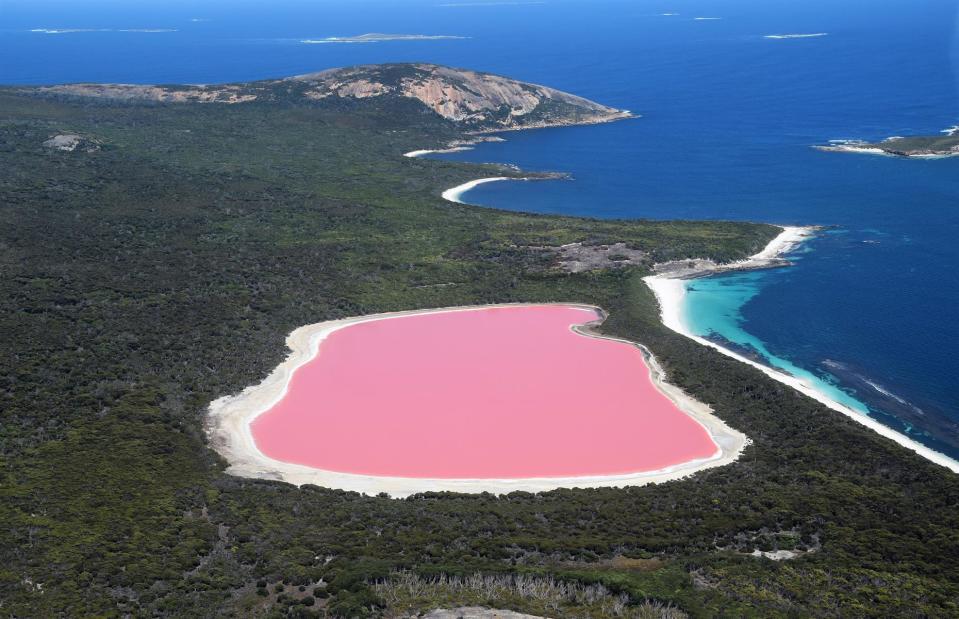
matteo_it/Shutterstock
The world is full of surprises, and some of the most fascinating are found in lakes that defy expectations. Some stand out for their striking colours – from lime green to bubblegum pink – others for the rare life forms that call them home. Either way, each of these lakes is an incredible example of the diversity and hidden wonders of our planet’s natural landscapes.
Read on to discover 30 of the world's most unusual lakes...
Kelimutu Lakes, Flores Island, Indonesia
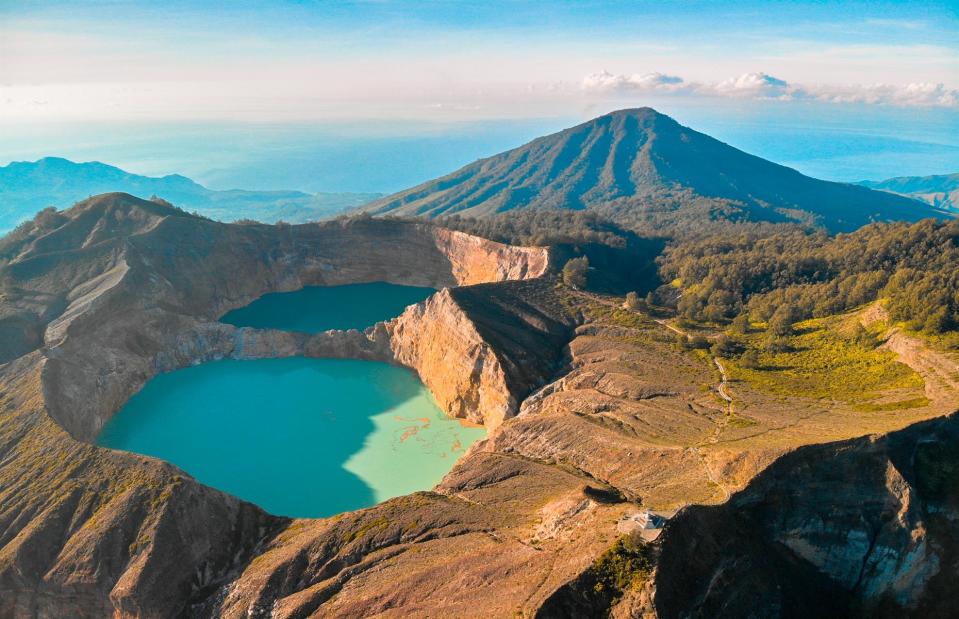
anasyraf/Shutterstock
Kelimutu Lakes, located on Flores Island in Indonesia, are renowned for their strikingly vibrant colours. These three crater lakes –Tiwu Ata Bupu, Tiwu Ko'o Fai Nuwa Muri and Tiwu Ata Polo – frequently change hues from blue and green to red and black due to mineral reactions and volcanic activity. Kelimutu, a sacred site for the local Lio people, offers stunning vistas and is a popular destination for tourists seeking both natural beauty and cultural richness in Indonesia's lesser-known regions.
Jellyfish Lake, Eil Malk Island, Palau
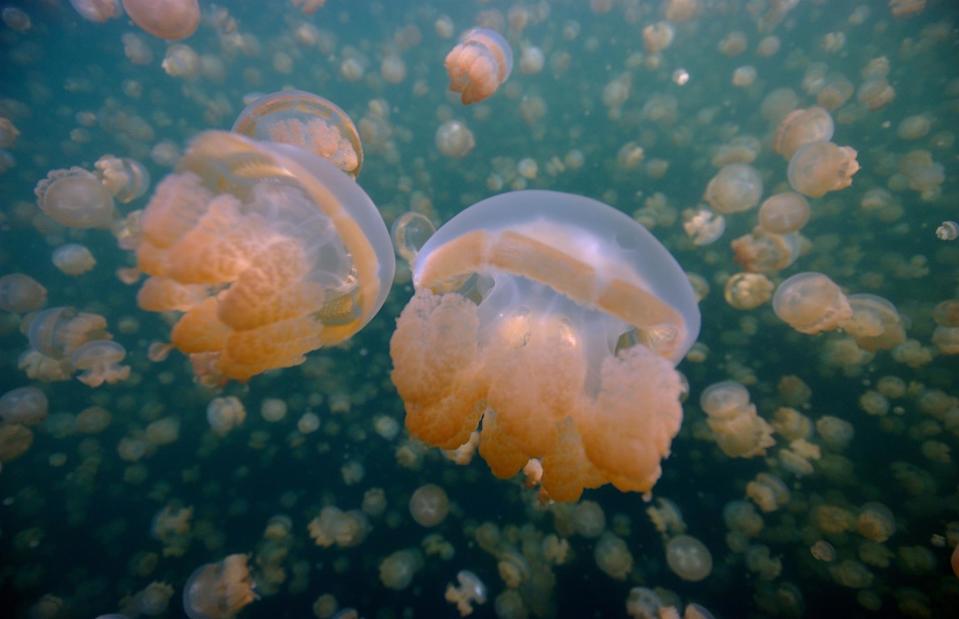
Brad Fish/Shutterstock
Eil Malk Island in Palau is home to a marine lake famous for its abundant population of golden jellyfish, a unique and endemic sub-species. Because the lake is separated from the open ocean and lacks significant predators, these jellyfish have evolved to be nearly stingless, as they do not need potent venom for defence or hunting. They also host symbiotic algae called zooxanthellae in their tissues. As the jellyfish swim and rotate around the lake, they ensure the algae receive enough sunlight for photosynthesis, while the algae provide the jellyfish with energy and nutrients in return.
Devil's Bath, North Island, New Zealand
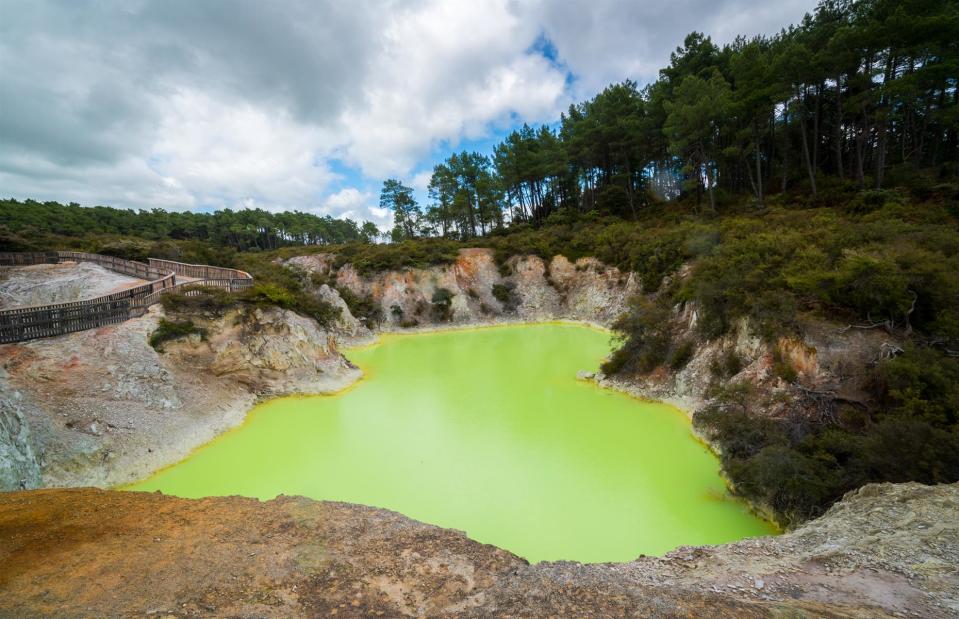
Summit Art Creations/Shutterstock
With its alarming lime green hue, you might think Devil's Bath at Wai-O-Tapu Thermal Wonderland in New Zealand is the result of something toxic, but this striking colour is entirely natural. The vivid green is caused by a mix of sulphur and ferrous salts in the water, reflecting the unique chemistry of the area. Set amidst a surreal landscape of steaming vents and bubbling mud pools, Devil’s Bath is just one of the many jaw-dropping natural wonders created by the intense geothermal activity that defines this otherworldly park.
Lac Rose, Dakar Region, Senegal
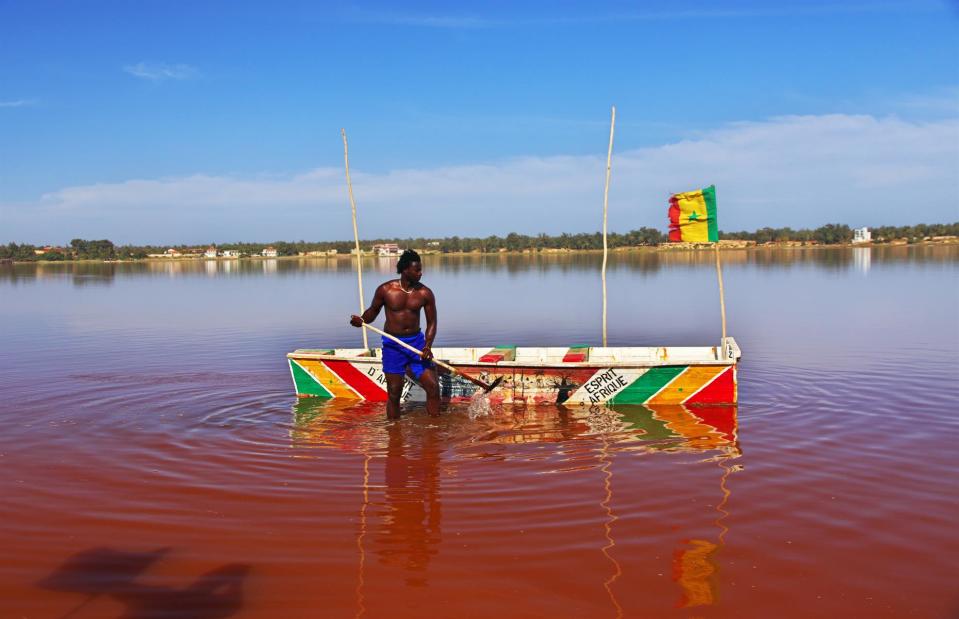
Sergey-73/Shutterstock
Another famously pink lake, Lac Rose (Lake Retba) in northeast Senegal, also owes its striking colour to Dunaliella salina algae, which thrive in its salty waters. The lake is also a significant salt production site, where over 2,500 people are employed in harvesting and processing salt by hand. To protect their skin from the harsh effects of the high salinity, workers often cover themselves in shea butter.
Laguna Colorada, Potosi Department, Bolivia
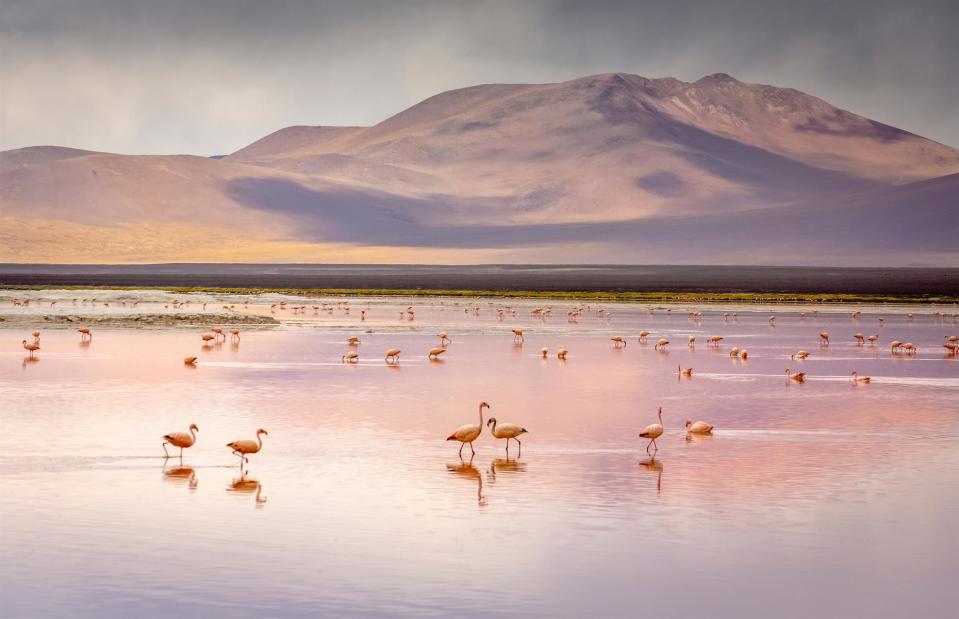
PositiveTravelArt/Shutterstock
If you haven't had your fill of pink lakes yet, Bolivia's Laguna Colorada is another crimson wonder. While folklore might suggest it's the blood of the gods, the vibrant hues are actually due to algae and rich minerals in the water. This lake is a critical habitat and one of the few breeding grounds for the endangered Andean flamingos, which flock to its nutrient-rich waters. High in the Andes mountains, this colourful natural wonder, surrounded by snow-capped peaks, is a photographer's dream.
Mono Lake, California, USA
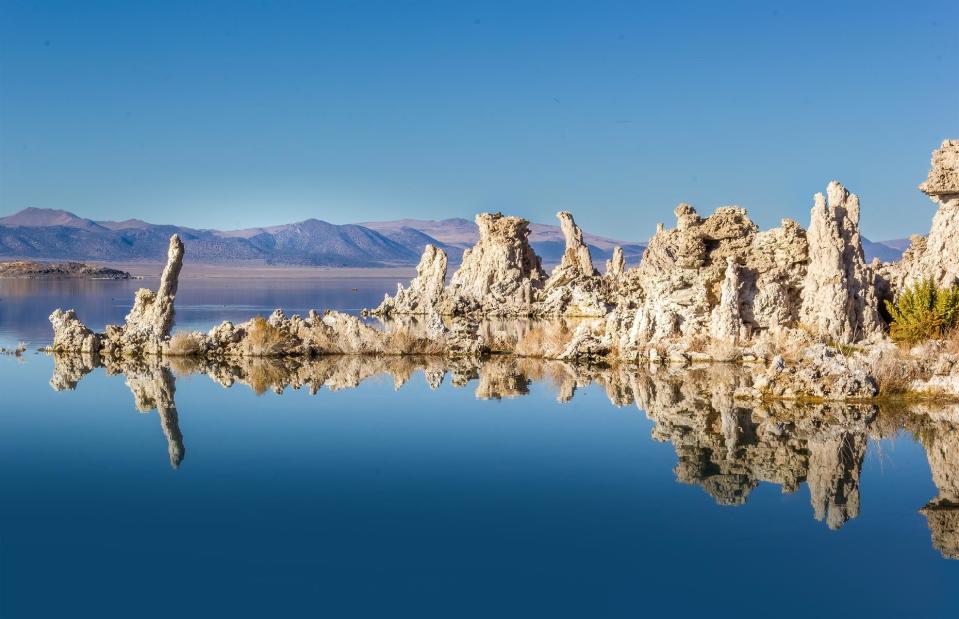
Martina Birnbaum/Shutterstock
Mono Lake is dominated by the otherworldly tufa towers that rise from its shores. These towering limestone formations have taken shape over centuries, formed when calcium-rich freshwater met the lake's alkaline waters. Once hidden beneath the surface, the tufa towers emerged as water levels dropped, largely due to Los Angeles diverting water from the lake's tributaries. But Mono Lake is more than just a visual marvel – it's a lifeline for millions of migratory birds, and the lake’s unique ecosystem thrives with unusual creatures like brine shrimp and alkali flies, essential to maintaining the delicate balance of this environment.
Boiling Lake, Morne Trois Pitons National Park, Dominica

Joseph Thomas Photography/Shutterstock
As you might imagine from the name, Boiling Lake in Dominica’s Morne Trois Pitons National Park, a UNESCO World Heritage Site, isn’t one for swimming: its waters range from 82–91ºC (180–196ºF) at the edges and are thought to be around boiling in the centre. The lake is a flooded fumarole, formed by a crack in the Earth's crust that allows volcanic gases to heat the water. Its vivid blue-grey colour comes from the volcanic gases, including sulphur, which you’ll likely smell long before you see it.
Gaet'ale Pond, Afar Region, Ethiopia

GC photographer/Shutterstock
With a salinity of about 43%, Gaet'ale Pond is considered the saltiest body of water on Earth. Unusually, it has no inlet or outlet stream and is instead fed by a hot spring that re-emerged following an earthquake in 2005. Located in Ethiopia's Danakil Depression, a region of intense volcanic and tectonic activity, the pond is strikingly colourful due to the mineral-rich landscape. However, it also emits noxious gases, and its waters are toxic and inhospitable to most life forms. So no swimming, then.
Plitvice Lakes, Lika-Senj County, Croatia
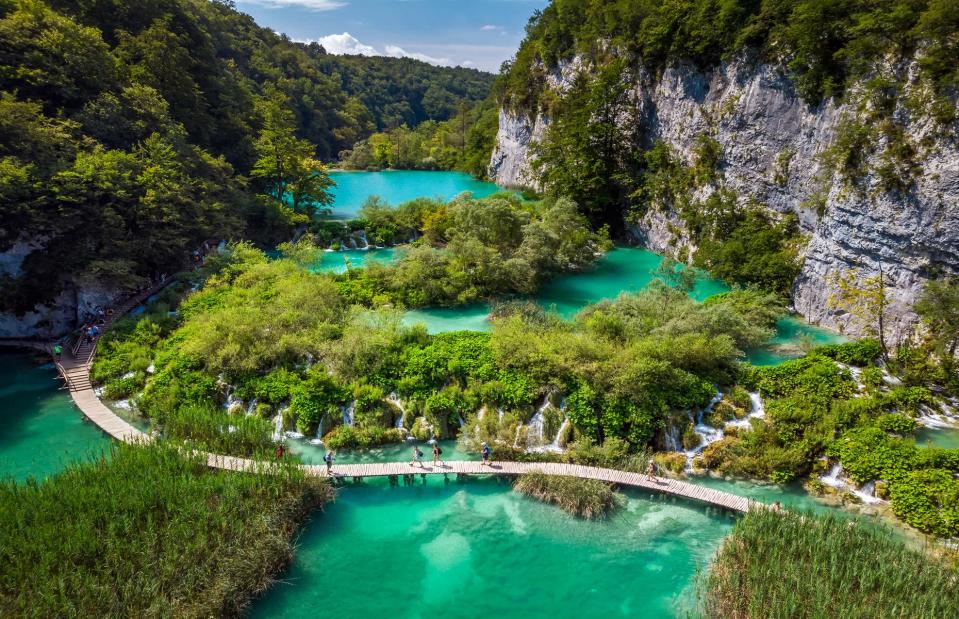
RuslanKphoto/Shutterstock
One of Croatia's most popular tourist destinations, Plitvice Lakes are renowned for all the right reasons. This intricate system of 16 interconnected lakes cascades into one another through a series of stunning waterfalls, creating a breathtaking landscape that attracts over a million visitors annually. The lakes are famous for their vibrant azure and emerald green tones, which change with the angle of sunlight and the minerals in the water, particularly calcium carbonate, giving the lakes their unique clarity and striking hues.
Aral Sea, Aral Sea Basin, Kazakhstan
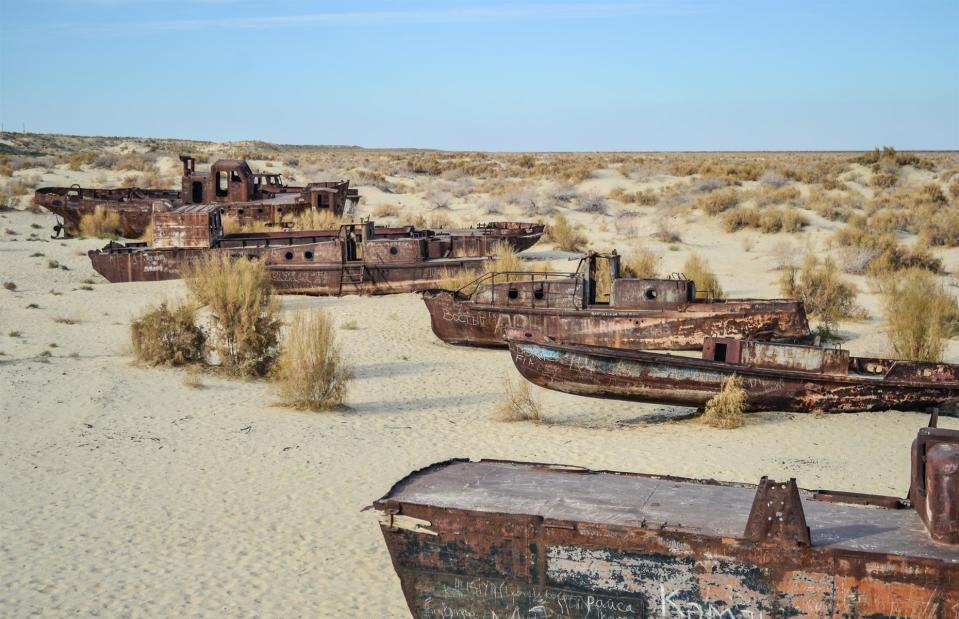
The Road Provides/Shutterstock
Once one of the world's largest inland bodies of water, the shores of the Aral Sea have receded so drastically that rusting ships now lie abandoned in desert-like conditions, sometimes miles from the current shoreline. The lake's shrinkage was largely due to unsustainable irrigation practices that diverted its feeding rivers. This environmental disaster has devastated local economies, disrupted weather patterns and left behind vast salt flats that exacerbate regional health issues.
Pitch Lake, La Brea, Trinidad and Tobago
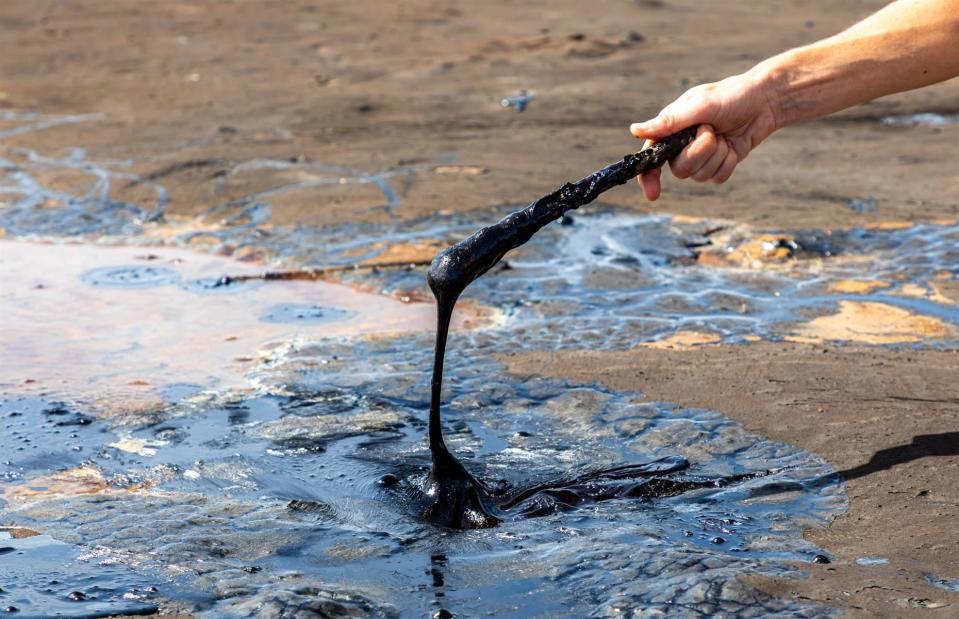
maloff/Shutterstock
Not all lakes are made of water. Pitch Lake contains the largest natural deposit of asphalt in the world, spanning over 100 acres. Its surface resembles a vast, solidified sea of pitch that slowly oozes due to the high asphalt content beneath. The lake continually replenishes itself from subterranean oil reserves, creating a dynamic, ever-changing landscape. Its natural asphalt has been used for centuries in various applications, from building materials to paving roads and even in some traditional medicinal treatments.
Spotted Lake, British Columbia, Canada
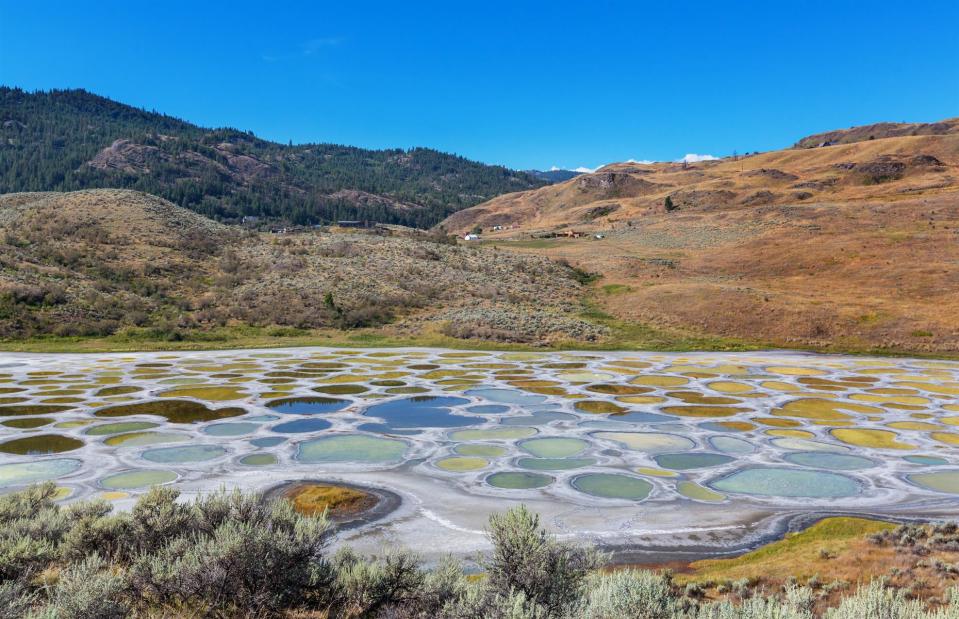
Galyna Andrushko/Shutterstock
Spotted Lake, known as Klkuxw by the Indigenous Okanagan Nation, is aptly named for the polka-dot-like deposits of minerals that appear on the lake’s surface during the summer months. Each spot varies in size and colour, ranging from turquoise to yellow-green, depending on the minerals present. Considered sacred by the Okanagan people for its healing properties, Klkuxw is a significant cultural and geological landmark.
Lake Balkhash, Balkhash-Alakol Basin, Kazakhstan

BEST-BACKGROUNDS/Shutterstock
Most lakes are either saltwater, freshwater, or a mix known as brackish water. But Lake Balkhash in Kazakhstan is different – it’s both freshwater and saline, with the two sides barely mixing. Separated by the narrow Uzynaral Strait, the lake’s western side is fed by the Ili River and remains freshwater, while the eastern side is more saline, resembling a vast, shallow bay. This unusual split encourages ecological diversity, supporting a wide range of plants and animals adapted to both fresh and saltwater environments.
Lake Baikal, Siberia, Russia

Alexey Kharitonov/Shutterstock
Lake Baikal in Russia is a natural marvel, holding the title of the world's deepest and oldest freshwater lake. Plunging over a mile deep in places and estimated to be around 25 million years old, its crystal-clear waters are a haven for an ecosystem teeming with life. Thousands of plant and animal species call this lake home, many of which are found nowhere else on Earth. Among these is the Baikal seal, a fascinating creature that defies the norm. While most seals prefer the salty oceans, the Baikal seal has adapted to thrive in the freshwater of this ancient lake.
The Lost Sea, Tennessee, USA
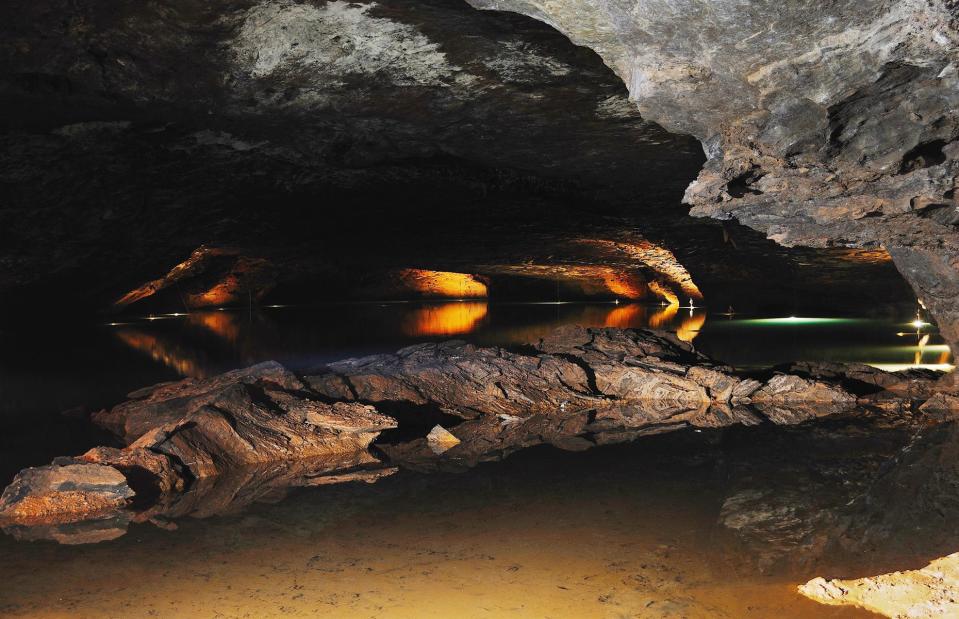
gracious_tiger/Shutterstock
Lakes aren't limited to the surface – hidden deep underground, the Lost Sea in Tennessee is a fascinating world of water and life, even in total darkness. Found within the depths of Craighead Caverns, this subterranean wonder stretches over four acres and plunges to about 70 feet (21m). The Lost Sea is home to blind fish and other unique creatures that have adapted to the cave’s environment. It's also a popular destination for adventurers, who can explore the caverns on guided boat tours, gliding past stalactites and stalagmites that have been forming for millions of years.
Lough Hyne, County Cork, Ireland
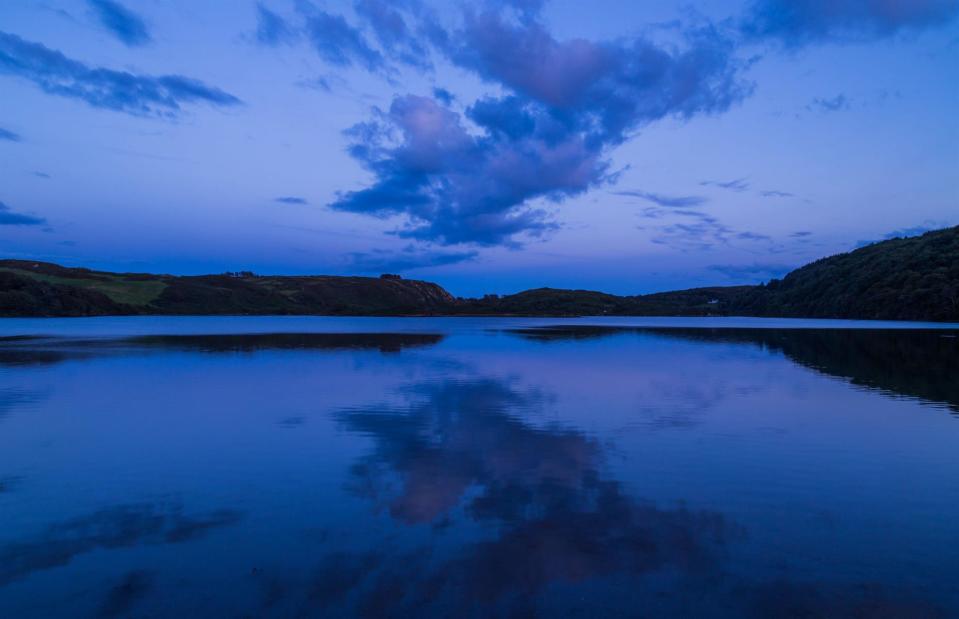
Panther Media GmbH/Alamy Stock Photo
Imagine kayaking at night on water that glows with a bright blue light. On the right summer night at Lough Hyne, you might be lucky enough to do just that. This marine lake, one of Europe's only saltwater lakes, is filled with tiny organisms that light up when disturbed, creating a mesmerising bioluminescent glow. This rare natural phenomenon is a magical experience that few are fortunate enough to witness.
Crater Lake, Oregon, USA
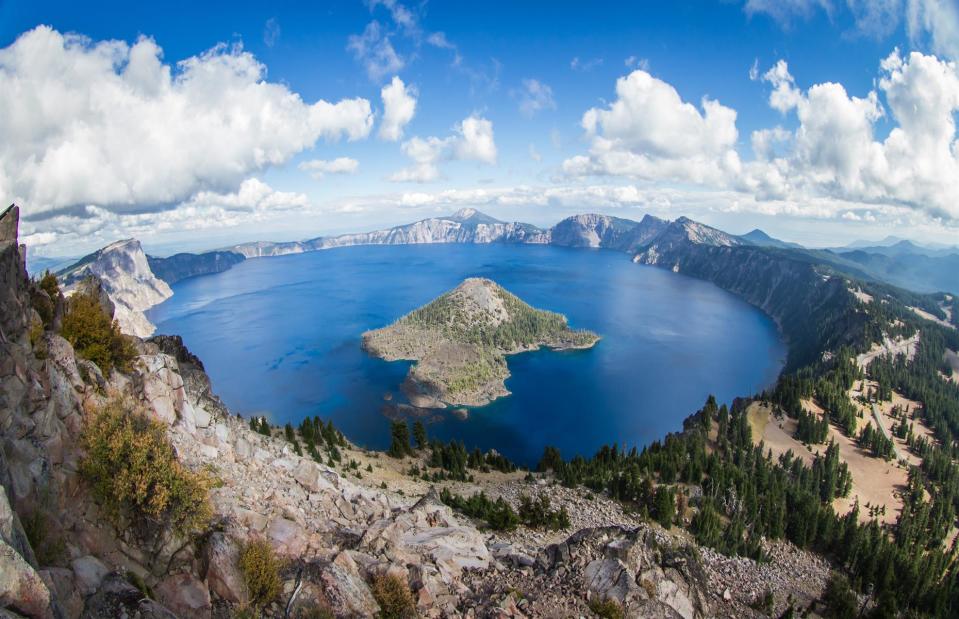
Nature's Charm/Shutterstock
Unlike most lakes, Crater Lake in Oregon has no rivers flowing in or out of it. Born from a volcanic eruption around 7,700 years ago, this stunningly deep blue lake sits in the caldera of Mount Mazama and is famous for its crystal-clear waters. The lake is home to a rich variety of plant and animal life, including the unique Mazama subspecies of the rough-skinned newt. Its pristine waters also provide scientists with a vital window into understanding the effects of climate change on freshwater ecosystems.
Lake Nyos, Northwest Region, Cameroon

Fabian Plock/Shutterstock
Lake Nyos in Cameroon, also known as the 'Exploding Lake', is infamous for its potential for limnic eruptions. These deadly events occur when dissolved carbon dioxide gas is suddenly released from the lake's depths, triggered by volcanic activity or landslides. In 1986, a catastrophic limnic eruption released a massive cloud of CO2, suffocating over 1,700 people and countless livestock in nearby villages. Unlike typical volcanic eruptions, this killer silently creeps over the land, posing a continuous threat to local communities. The lake remains closely monitored, with degassing systems in place to prevent future disasters.
Medicine Lake, Alberta, Canada
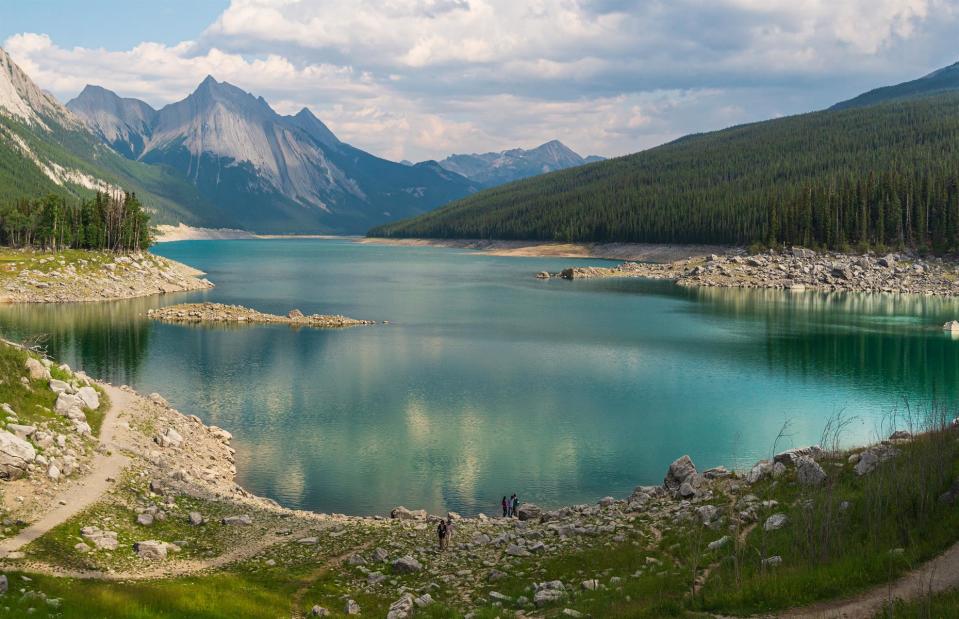
MORENO01/Shutterstock
Now you see it, now you don't. Medicine Lake in Jasper National Park is a geological marvel that vanishes during the winter when the water drains through a network of underground sinkholes and caves, only to reappear in the spring as it fills with glacial meltwater. In Indigenous mythology, Medicine Lake is a place of deep spiritual significance, where healing powers are said to reside. According to local beliefs, the lake's disappearing water mirrors the movements of spirits between worlds, adding to its sacred reputation.
Lake Nyasa, Southern Africa (Malawi, Mozambique, Tanzania)

Marina Veder/Shutterstock
Lake Nyasa, also known as Lake Malawi or the Lake of Stars, is a jewel of biodiversity in East Africa, nestled between Malawi, Mozambique, and Tanzania. Its crystal-clear waters teem with life, boasting over 1,000 species of vibrant cichlid fish, many unique to the lake. The African clawless otter can also be spotted here, hunting fish and crustaceans in its freshwater habitat. Beyond its natural beauty, Lake Nyasa is a lifeline for local fishing communities, essential for regional food security.
Lake Tazawa, Akita Prefecture, Japan
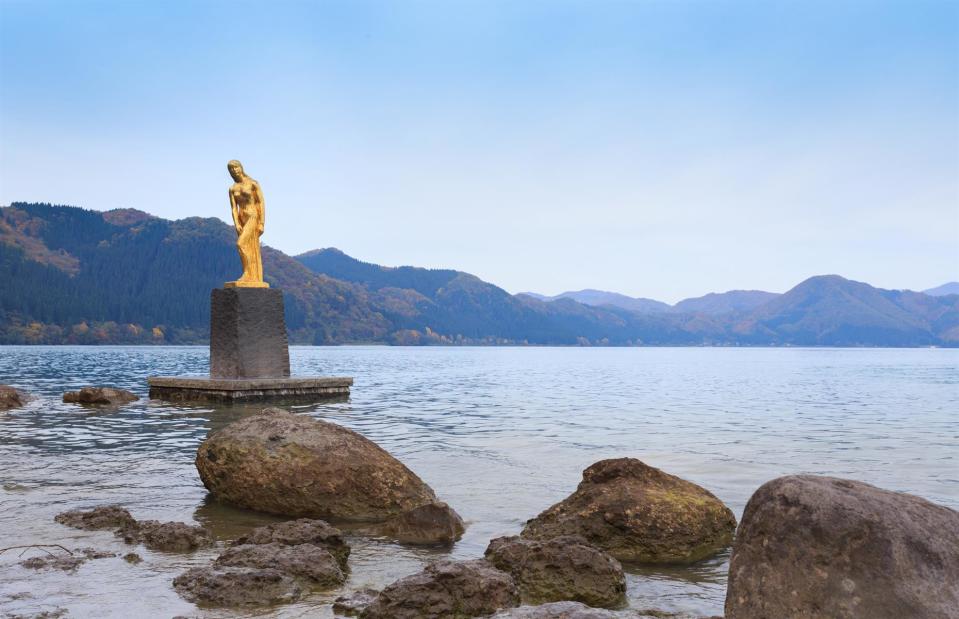
PorzillA/Shutterstock
Nestled in Akita Prefecture, Lake Tazawa is the deepest lake in Japan, with a depth of 1,388 feet (423m), and is renowned for its deep blue colour and exceptional clarity. According to local legend, this striking hue is linked to the tale of Tatsuko, a beautiful maiden who, in her quest for eternal beauty, drank from a sacred spring and was transformed into a dragon, becoming the lake's guardian.
Lake Akan, Hokkaido, Japan

ajisai13/Shutterstock
Lake Akan, in Akan Mashu National Park, is not only renowned for its pristine waters but for rare marimo algae balls. These lush, green, velvety spheres are formed by a unique type of algae that takes on its round shape thanks to the lake's gentle currents and waves. Revered as national treasures in Japan, marimo are often kept in fish tanks as decorations and symbols of good luck. Every October, the Marimo Festival brings the community together to celebrate these unique algae balls, with traditional Ainu rituals honouring and protecting them.
Five Flower Lake, Sichuan Province, China
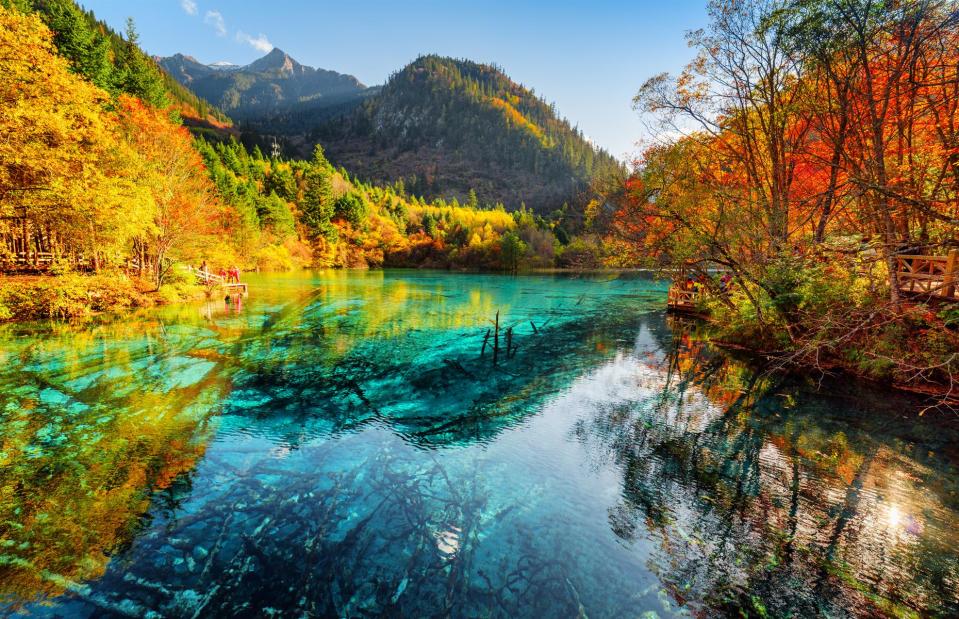
Efired/Shutterstock
Five Flower Lake is a true natural wonder, with its waters displaying a stunning array of colours thanks to the deposits of calcium carbonate and the presence of various aquatic plants. The lake’s crystal-clear, shallow waters offer an extraordinary view of fallen tree trunks resting on the lakebed, creating a magical underwater scene. Nestled among lush forests and framed by snow-capped mountains, Five Flower Lake is a jewel of Jiuzhaigou Valley, a UNESCO World Heritage Site known for its breathtaking beauty and rich biodiversity.
Nam Tso Lake, Tibet Autonomous Region, China
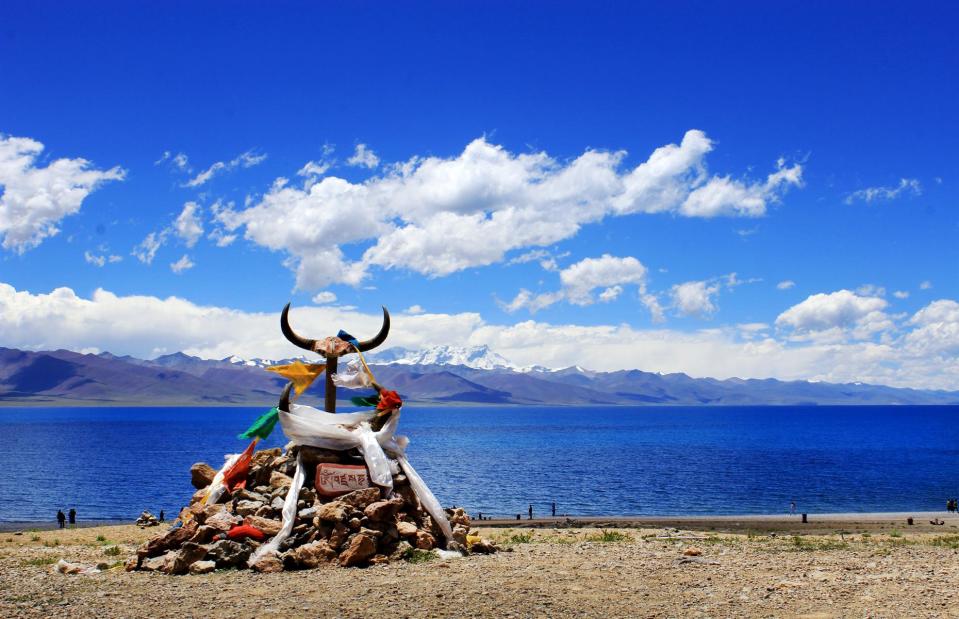
Zj_stoner/Shutterstock
High in the Tibetan peaks, Namtso, also known as Heavenly Lake, is one of the world’s highest saltwater lakes and holds deep spiritual significance for Tibetan Buddhists. Revered as a sacred site, Namtso draws pilgrims who embark on a 43-mile (70km) kora, or circumambulation, around the lake’s stunning perimeter. This trek, believed to cleanse sins and bring blessings, is especially powerful during the Tibetan Year of the Sheep, when the lake’s spiritual energy is thought to be at its peak.
Kanas Lake, Xinjiang, China
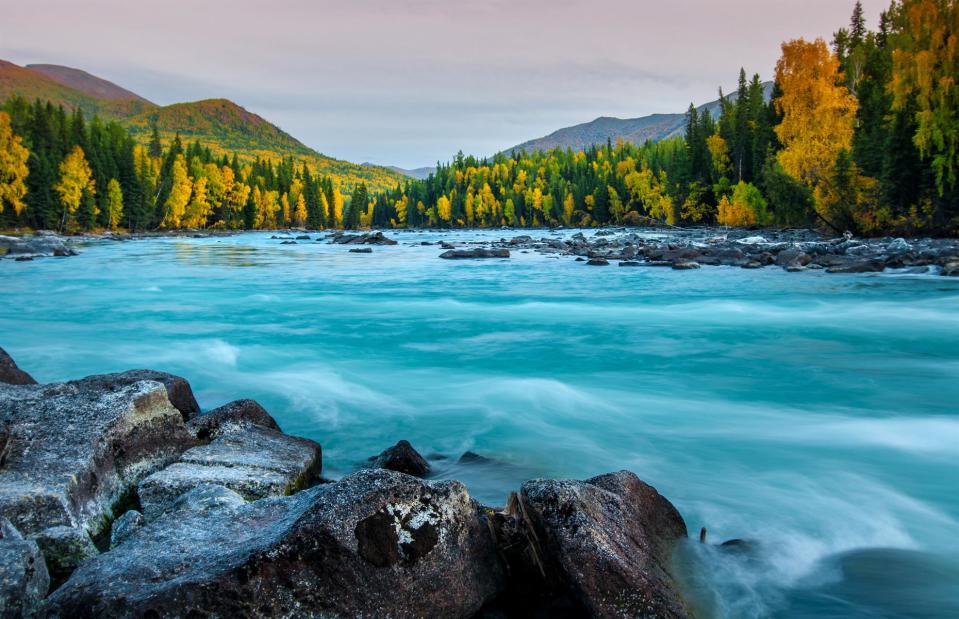
Chainarong Phrammanee/Shutterstock
Forget Loch Ness, Kanas Lake in China’s Xinjiang region has its own legendary 'monster'. According to local legend, when Genghis Khan died, his body was preserved at the bottom of the lake and is now guarded by mysterious water creatures. While this myth adds to the lake's mystical allure, scientists today believe the so-called 'monster' could actually be hucho taimen, a massive freshwater fish from the salmon family that can grow up to six and a half feet (2m) long.
Gippsland Lakes, Victoria, Australia
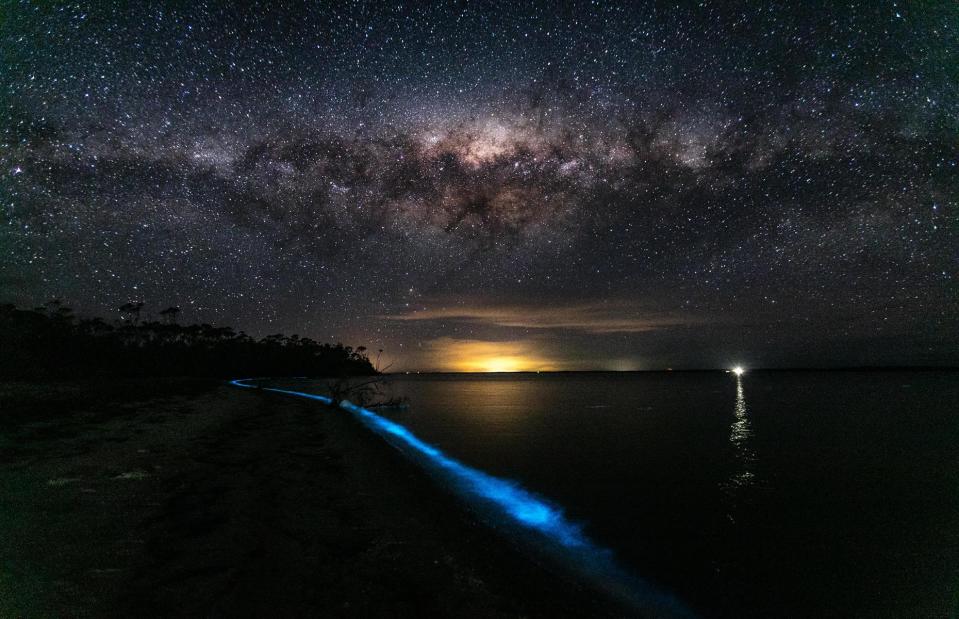
becauz gao/Shutterstock
Gippsland Lakes is a large network of inland waterways in southeastern Victoria, known for its stunning natural beauty and diverse wildlife, including pelicans and dolphins. On rare summer nights, the lakes come alive with bioluminescence, primarily caused by Noctiluca scintillans –tiny organisms that emit a blue-green glow when disturbed, creating a magical, shimmering effect in the water after dark. While koalas can be found in the surrounding areas, the lakes themselves are most famous for this occasional and enchanting natural light show.
Lake Rotomahana, North Island, New Zealand
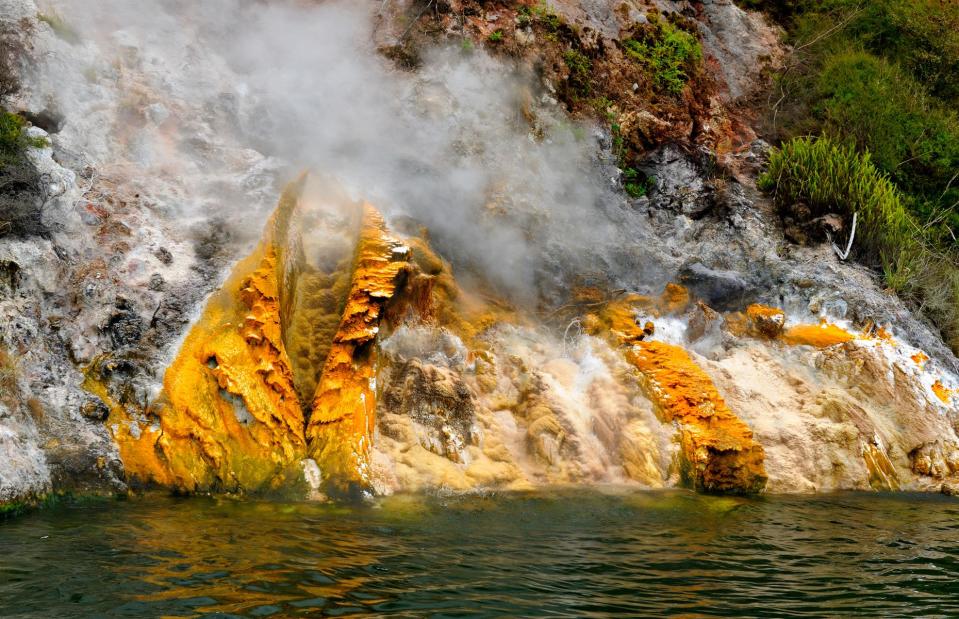
repox/Shutterstock
Lake Rotomahana, located on New Zealand’s North Island, underwent a dramatic transformation following the 1886 eruption of Mount Tarawera. The eruption reshaped the lake, increasing its size and altering its hydrothermal features. What makes Lake Rotomahana particularly fascinating is its connection to the legendary Pink and White Terraces, once considered the eighth wonder of the world. These breathtaking silica-rich formations were thought to have been destroyed in the eruption, but recent discoveries suggest that remnants of these natural marvels still lie hidden beneath the lake's waters.
Lake Resia, South Tyrol, Italy

Vadym Lavra/Shutterstock
You might do a double-take when you see a 14th-century bell tower rising from the azure waters of Lake Resia in Italy’s South Tyrol region. Your eyes aren’t deceiving you – this is the last visible remnant of the village of Curon, which was flooded in 1950 to create a reservoir connecting three smaller lakes. While the bell tower stands as a haunting reminder of the past, the rest of the village remains submerged, hidden beneath the lake's surface.
Lake Hillier, Western Australia, Australia
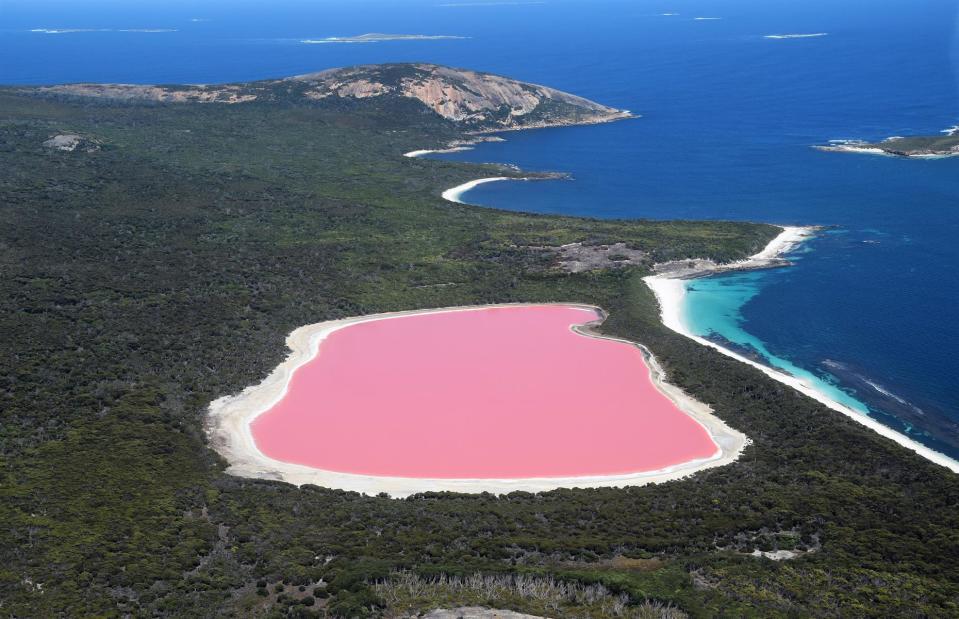
matteo_it/Shutterstock
Thanks to a mix of Dunaliella salina algae, which produces a red pigment, and halophilic bacteria in the salt crusts, Lake Hillier in Western Australia boasts a bold, bubblegum pink colour. Despite its unusual appearance, the lake is safe to swim in, though its remote location on Middle Island makes access challenging. Surrounded by dense eucalyptus forests and the blue Southern Ocean, Lake Hillier creates a stunning natural contrast, particularly when seen from above.
Lake Abraham, Alberta, Canada
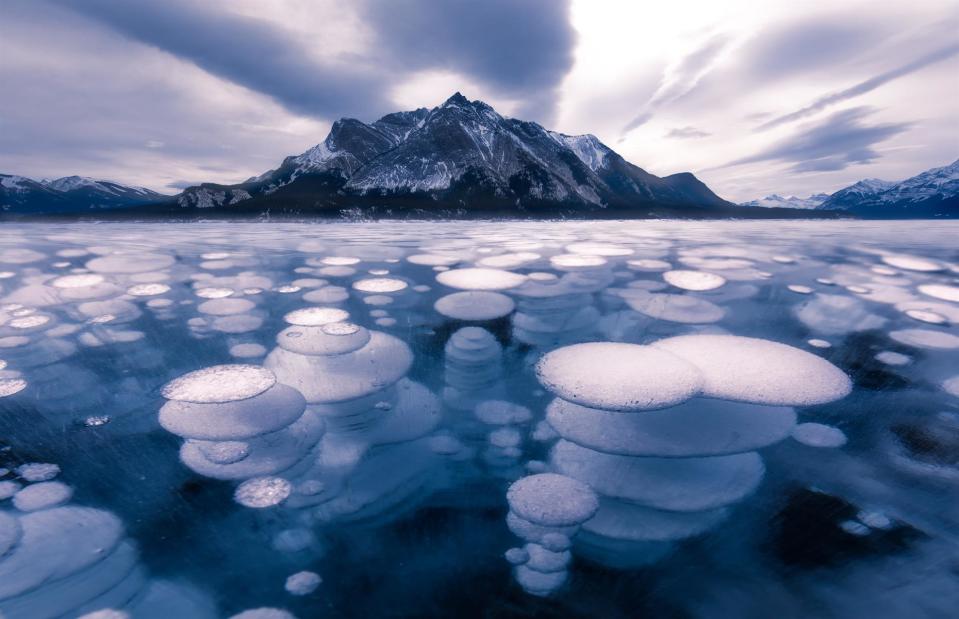
CoolPhoto2/Shutterstock
Lake Abraham transforms into a magical winter wonderland in colder months, where nature’s artistry takes centre stage. As the temperatures drop, methane gas rises from the lakebed and freezes beneath the surface, creating an enchanting display of suspended bubbles that look like shimmering pearls trapped in ice. Surrounded by the stunning Canadian Rockies, this picturesque lake becomes a playground for winter adventurers, drawing ice fishers, snowmobilers and photographers eager to capture its surreal beauty.


